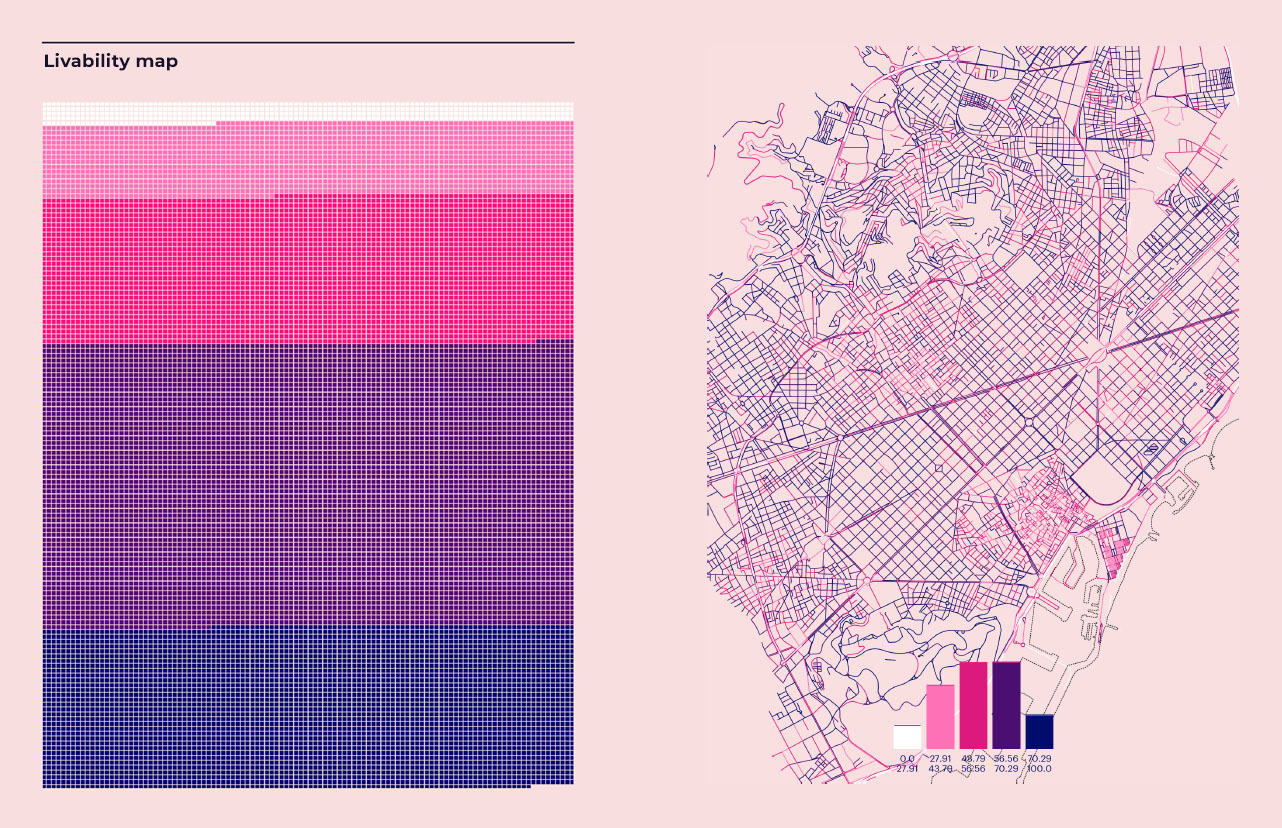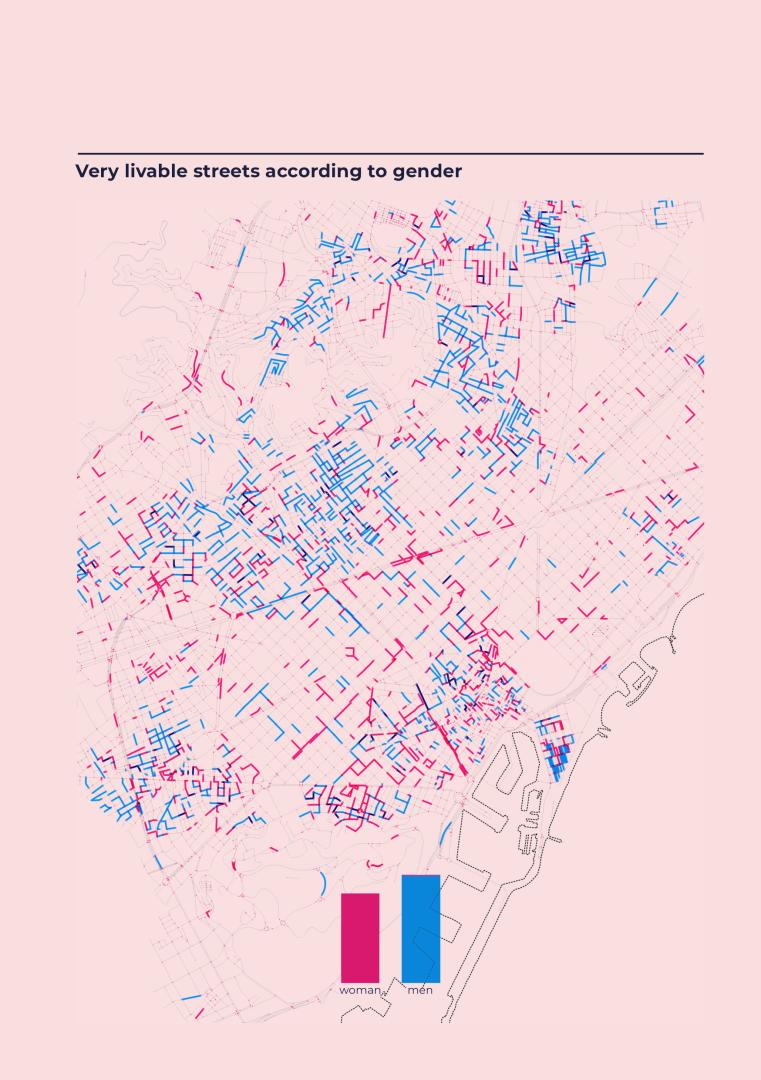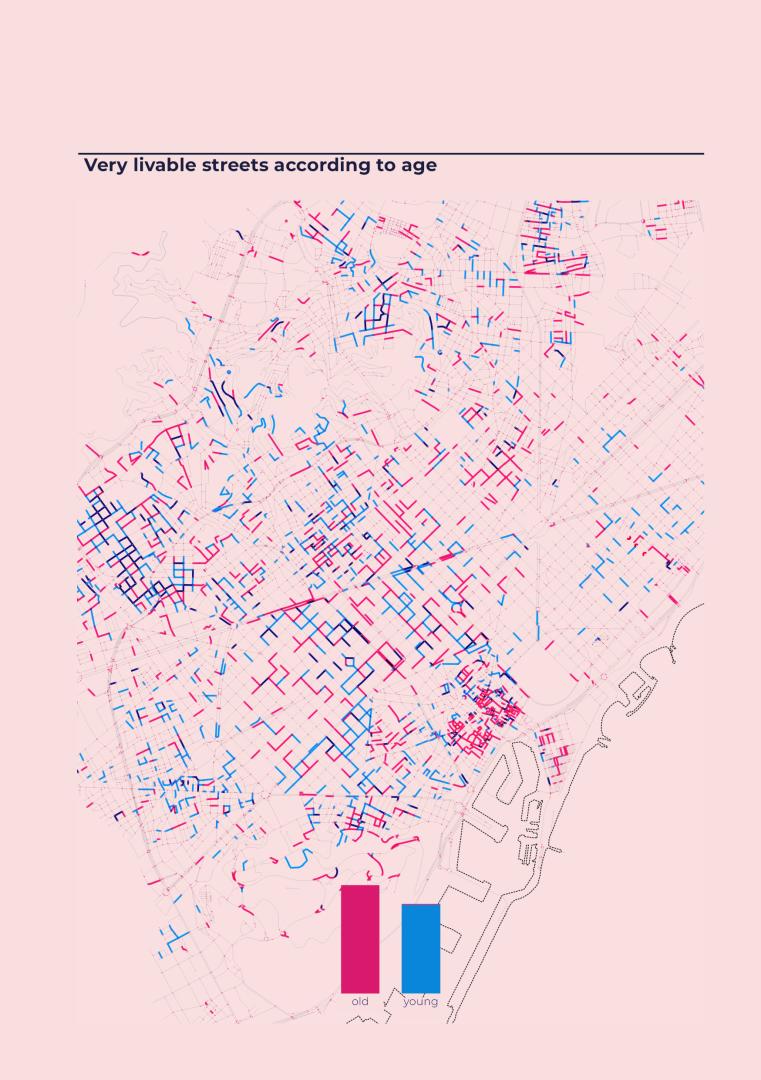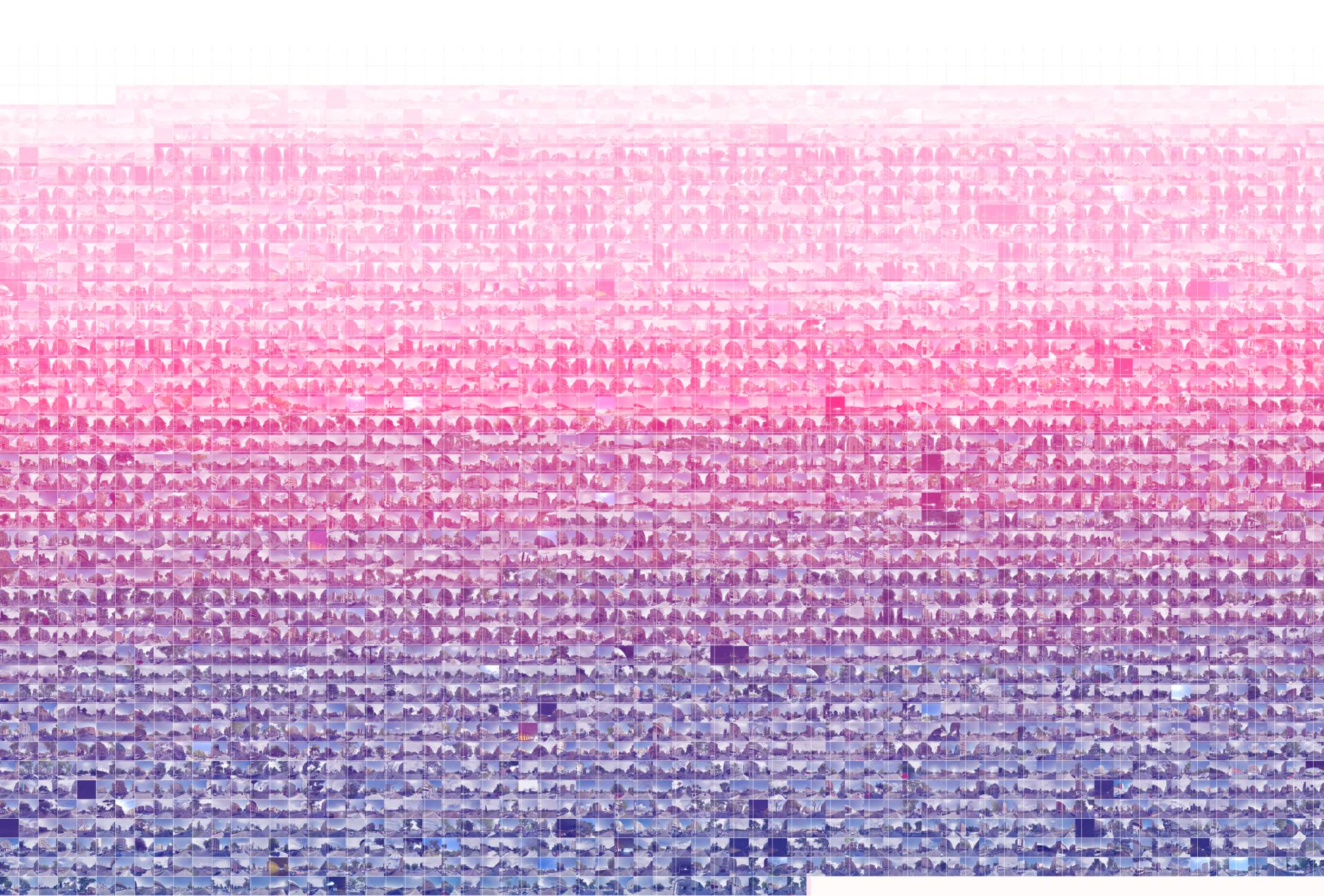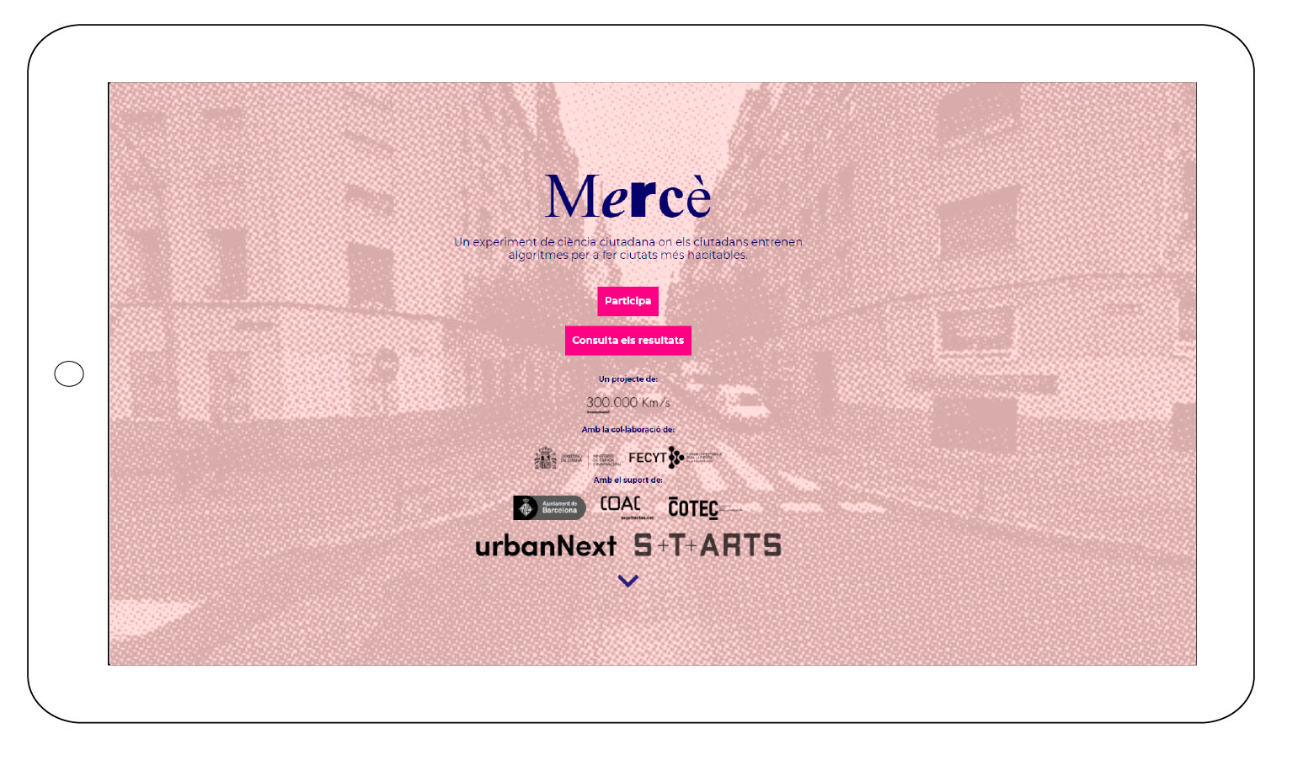Mercè
Basic information
Project Title
Full project title
Category
Project Description
The Mercè project carried out in Barcelona (2020) embodies a new research line that applies new machine learning techniques (one of the branches of artificial intelligence) to the disciplines of urban planning, geography, sociology, economics and urban health through a citizen science experiment whose objective is to build collective, objective knowledge and open data about urban environments with the aim of improving their livability.
Geographical Scope
Project Region
Urban or rural issues
Physical or other transformations
EU Programme or fund
Which funds
Description of the project
Summary
Nowadays, we are at a time of opportunity for city planning as a result of both the technological context and the new era of massive information (big data, open data, iot) and a greater desire for transparency and participation of all agents in urban planning and design processes.
In this context, the Mercè project is proposed as a new line of work that applies new machine learning techniques (one of the branches of so-called artificial intelligence) to the disciplines of urban planning, geography, sociology, economics and science. urban health to build objective knowledge and open data about our urban environments.
Thus, Mercè is a citizen science experiment that aims to involve citizens in the training of an algorithm that allows us to design more livable cities. Through this experiment it is possible to translate the individual perceptions of many citizens about the livability of cities into objective knowledge, reusable in urban planning.
The relevance and innovation of the project is based on applying information and communication technologies to different transversal fields of knowledge, which have the city as their common denominator. The project develops a workflow based on public / open data and machine learning techniques to promote algorithmic transparency in data science and citizen participation with great social impact.
In addition, Mercè provides a solid structure to bridge the gap between subjective and objective knowledge thanks to the use of cutting-edge technologies and the existence of a legal framework (promoted by Europe with transparency laws).
At the same time, it positions Spanish cities (with a long tradition in urban planning with great references among which Ildefonso Cerdá or Arturo Soria stand out) as a training model for other areas of the planet, which currently do not have sufficient data quality to carry out this type of experiment, openly offering the knowledge and infrastructure
Key objectives for sustainability
In 2018, 80% of the Spanish population lived in cities and this percentage is expected to grow to 88% in 2050. This trend, common to the rest of Europe, forces us to focus on the design and planning of cities with the aim of making them the most livable environments on Earth.
Today, many countries such as Spain have established the roadmap for the sustainable development of their cities for the next decade through the different urban agendas framed in the 2030 Agenda, the New United Nations Urban Agenda and the Urban Agenda for European Union.
However, in this framework of innovation in terms of objectives to improve the development of urban environments, the standards that mark livability are still being redefined under logics that are based on traditional metrics that leave out qualitative contributions.
The Mercè citizen science project experiments with new channels of digital participation, mainstreaming the discipline of urban planning and claiming its transforming capacity towards a more sustainable, inclusive and local city. Given that we can affirm that the livable, even being subjective, is quantifiable, can be incorporated in the form of objective criteria that guide a more participatory, transparent, evaluable and fair planning.
The participation and involvement of all citizens is key to addressing the radical transformation of lifestyles that we are going to experience in the next decade, if we want to face the climate emergency and the challenges that it entails. This participation must be accompanied by technology, making planning processes incorporate new standards shared between cities, but above all, it must be guided by the livability of cities as the ultimate goal and engine of change.
Key objectives for aesthetics and quality
The Mercè project depends on the participation of citizens for the success of the experiment, therefore, from the beginning of the platform's conception, aesthetic criteria has been followed in order to make the participation in the project appealing. Striking and consistent color ranges have been chosen and used both for the voting application and home page and for the report.
In addition, participation has been thought of in a playful way, citizens through a mobile, tablet or computer, have access to pairs of photographs in which they have to choose which one they would prefer to live in. By introducing the game component, participation becomes accessible to a greater number of population profiles and encourages participation more than once, improving algorithm training.
Finally, the results are translated into a series of cartographies that transmit the information in a clear and simple way and have all the key elements of composition and measurement. These cartographies use the color scales used throughout the project, giving a cohesive result both from an aesthetic and communicative point of view.
Key objectives for inclusion
Mercè involves citizens in scientific processes and data collection, empowering them in the construction of data sovereignty structures and participation in decision-making at the local level.
As we have explained before, a fundamental piece in the training process is the design of participation, that is, how citizens interact in a scientific process of data classification. Through the training process it is possible to translate the individual perceptions of many citizens about the livability of cities into objective knowledge, reusable in urban planning.
To achieve this goal, the voting app design and operation guarantees the participation of different groups: from an individual citizen of any age, sex and origin to a specialized public related to the subject of the experiment (whether by interest in urbanism and the city as in data science).
In addition, the digital format of the project allows the active participation of these different profiles and allows the younger generations to be involved, increasing the pedagogical and transformative potential of the project.
Aware, also, of the barriers that this format can generate in groups that are not digitized (such as the elderly), the launch of the experiment has been accompanied by several audiovisual capsules that explain how to participate, as well as informative materials published in various media.
Results in relation to category
The experiment makes the livability of the city measurable, a concept on which many others depend transversely but which summarizes with great precision the ultimate objective of urban planning. It also helps to understand which urban parameters are the most influential in this quantification.
Instead of trying to build a single possible description of what a livable city looks like, Mercè builds a collective description through the participation of a great number of citizens. Probably each one of us differs from the opinions of others, since it is possible that what pleases some does not please the rest in the same way. However, if we collect a large number of opinions, despite the differences between them, we can find a general idea.
As a final result of the Mercè experiment, we obtain a map of the livability of the city that shows us, according to five typologies, which are the most and least livable streets. This allows us to know which streets need more attention and to know which are the parameters that we must take into account when rehabilitating or building new urban space.
In the case of Barcelona, the 10 most relevant urban variables when defining whether a street is livablee were:
- Length of street section
- Lushness of vegetation
- Surface for residential use
- Number of trees
- Number of vehicles that travel the street segment
- Connectivity with other streets
- Degree of irregularity of the road layout
- Age of buildings
- Proportion of public space
- Road orientation
How Citizens benefit
The involvement of citizens in the Mercè project is, as we have mentioned before, at the basis of the project, so the communication strategy was key to achieving high participation and thus the success of the experiment. The beginning of the participation coincided with the home confinement due to COVID-19, and the face-to-face meetings that we had prepared in relation to the Barcelona Architecture week (a benchmark annual event in this area) became exclusively digital.
The digital format of the project allowed us to continue with the experiment, reinforcing the citizen involvement strategy. One key pillar was forging alliances with various relevant entities. Among the strategic partners of the project is the Urban Next platform, a global content network focused on architecture and urbanism. Urban Next published several contents of the project on its platform and disseminated it on its social networks, reaching a specialized national and international audience.
Likewise, it had the support of the Ibercivis Foundation, an entity that develops, promotes and investigates citizen science, that added Mercè to the map of the Citizen Science Observatory of Spain, that collects the initiatives carried out in the national territory.
In addition to strategic partnerships, the call for action was channeled through different digital communication channels through audiovisual capsules that invited participation and provided a direct link to the voting system. And was also accompanied by the launch of a press kit that was sent to both local and national media as well as to institutions related to architecture, culture and urban planning.
Finally, a mailing campaign to specific groups was carried out to promote generational diversity in the experiment and thus collect the voice of both children and the elderly. To this end, specific dissemination was made among the associations of fathers and mothers, associations of the elderly and other public facilities in the city.
Physical or other transformations
Innovative character
The Mercè project is conceived as a new line of work that applies new machine learning techniques (one of the branches of so-called artificial intelligence) to the disciplines of urban planning, geography, sociology, economics and urban health in order to build objective knowledge and open data about our urban environments.
The relevance and innovation of the project is based on applying information and communication technologies to different transversal fields of knowledge, which have their common denominator in the city. The project develops a workflow based on public/open data and machine learning techniques to promote algorithmic transparency in data science and citizen participation with great social impact.
In addition, Mercè provides a solid structure to bridge the gap between subjective and objective knowledge thanks to the use of cutting-edge technologies and the existence of a legal framework (promoted by Europe with transparency laws).
Learning transferred to other parties
One of the main potentials derived from the experiment is the possibility of comparing cities. Although experiences are beginning to exist that seek to exchange learning between various urban realities, urbanism is still far from being a science of making cities as it was defined by Ildefonso Cerdá more than a century ago.
In many cases, methodologies produce approaches through non-replicable, non-comparable and, above all, non-measurable hypotheses. This entails slow learning between the different urban experiences of the world and the impossibility of understanding how one city can learn from another. However, if we are able to share quantifiable information and methodologies, perhaps only then, urban planning can advance as fast as other disciplines such as medicine, which is capable of generating and sharing standards and results.
The project wants to provide cities with a tool and methodology, based on collective and participatory artificial intelligence, and open data models, to build bottom-up citizen indicators that allow both designing a more livable city and offering strategies to evaluate projects, actions and urban policies already deployed.
In a growing scenario of decision-making with data, both in the design and planning processes, it is necessary to complement this objective information with bottom-up indicators that collect the subjective and experiential perceptions of citizens and introduce a qualitative vision.
For all these reasons, Mercè constitutes a tool for citizens and administrations to improve knowledge of our environment while promoting citizen participation in the field of urban planning, involving the citizen in the construction of indicators.

